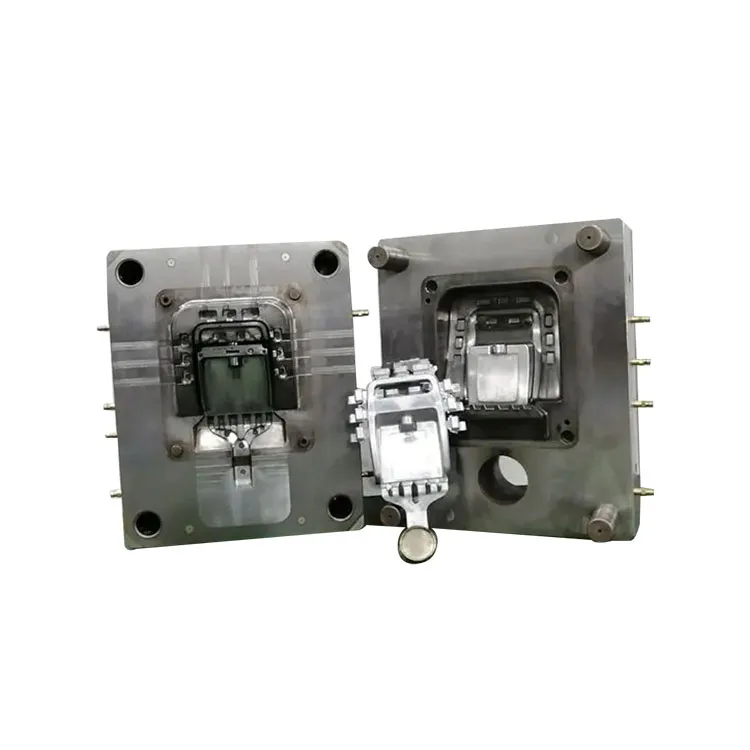Applications and Considerations of Powder Die Casting Moulds
2024-07-25
Powder die casting molds are used in the powder die casting process, which is a method for producing precision metal components. This process involves using metal powders and a die casting mold to create complex and high-quality parts. Here’s an overview of powder die casting molds, their features, applications, and considerations:
Overview of Powder Die Casting
Powder die casting is a variant of die casting where metal powders are used instead of molten metal. This process allows for precise control over material properties and can be advantageous for producing high-quality components with complex geometries.
Features of Powder Die Casting Molds
1. Material:
- Tool Steel: Molds are often made from high-grade tool steels (e.g., H13, D2) known for their durability and resistance to wear and heat.
- Alloy Steel: Used for molds requiring higher strength and heat resistance.
2. Design:
- Complex Geometries: Capable of producing intricate and detailed parts due to the precision of the die casting process.
- Cooling Channels: Integrated cooling systems to manage the temperature of the mold and ensure uniform cooling.
3. Construction:
- Precision Machining: Molds are manufactured with high precision to ensure accurate replication of part details.
- Interchangeable Components: Some molds are designed with interchangeable inserts to accommodate different part designs.
4. Surface Finish:
- Polished or Textured: Molds can be finished to achieve smooth or textured surface finishes on the cast parts.
Applications
1. Automotive Industry:
- Components: Used for producing engine parts, transmission components, and other high-precision automotive parts.
2. Aerospace Industry:
- Parts: Ideal for manufacturing complex aerospace components that require high strength and low weight.
3. Electronics:
- Enclosures: Used for casting housings and enclosures for electronic devices where precision and durability are critical.
4. Medical Devices:
- Components: Suitable for creating intricate parts used in medical devices and equipment.
5. Consumer Goods:
- Products: Employed in producing high-quality parts for consumer products, including appliances and tools.
Benefits
1. High Precision:
- Allows for the production of parts with tight tolerances and complex geometries.
2. Material Efficiency:
- Reduces material waste compared to other casting methods, as powders can be more efficiently used.
3. Enhanced Mechanical Properties:
- Provides improved mechanical properties such as strength and durability due to the controlled production process.
4. Complex Shapes:
- Capable of producing intricate and detailed parts that may be difficult to achieve with other methods.
5. Reduced Post-Processing:
- Often requires less post-processing and finishing compared to other casting techniques.
Considerations
1. Cost:
- Initial Investment: High initial cost for mold production due to the precision required.
- Maintenance: Regular maintenance and inspection are necessary to ensure mold longevity and performance.
2. Design Complexity:
- Mold Design: Requires precise design and engineering to accommodate the specific needs of the casting process.
3. Material Properties:
- Powder Selection: Choice of metal powder affects the quality and properties of the final cast part. Ensuring consistent powder quality is crucial.
4. Production Volume:
- Suitability: Best suited for high-volume production runs where the benefits of precision and efficiency outweigh the initial setup costs.
5. Temperature Management:
- Cooling: Effective cooling is essential to prevent defects and ensure uniform part quality.
Maintenance and Care
1. Regular Inspection:
- Inspect molds regularly for wear, damage, and buildup of residue to maintain quality and performance.
2. Cleaning:
- Clean molds to remove any powder residue or contaminants that can affect the casting process.
3. Lubrication:
- Apply appropriate lubricants to moving parts and cooling channels to ensure smooth operation.
4. Repairs:
- Address any issues promptly to prevent further damage and maintain mold efficiency.
5. Storage:
- Store molds in a controlled environment to prevent corrosion and damage.
Conclusion
Powder die casting molds are essential for producing high-precision, high-quality metal components. Their ability to handle complex geometries and provide enhanced mechanical properties makes them valuable in various industries, including automotive, aerospace, electronics, and medical devices. Proper design, maintenance, and care are crucial to maximizing the benefits of powder die casting molds and ensuring efficient, cost-effective production.



